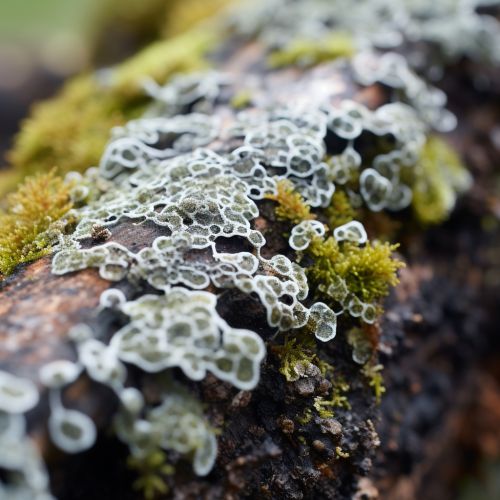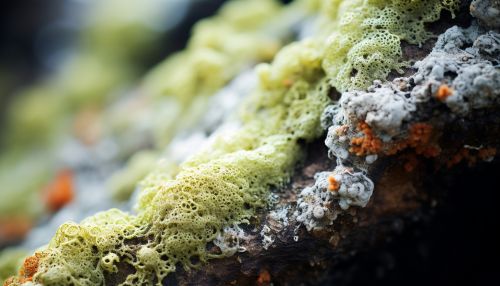Lichens
Introduction
Lichens are complex life forms that are a symbiotic partnership of two separate organisms, a fungus and an alga or cyanobacterium. They are an incredibly diverse group, with over 20,000 known species, and can be found in some of the most extreme environments on Earth.
Morphology and Structure
Lichens come in many colors, sizes, and forms. The properties are sometimes plant-like, but lichens are not plants. Lichens may have tiny, leafless branches (fruticose), flat leaf-like structures (foliose), flakes that lie on the surface like peeling paint (crustose), or other growth forms.


A macrolichen is a lichen that is either bush-like or leafy; all other lichens are termed microlichens. Here, "macro" and "micro" do not refer to size, but to the growth form. Common names for lichens may contain the word "moss" (e.g., "Reindeer moss", "Iceland moss"), and lichens may superficially look like and grow with mosses, but lichens are not related to mosses or any plant.
Symbiosis
Lichens are a symbiotic relationship between a fungus, usually an ascomycete, and an alga or a cyanobacterium. Several lichen species have a tripartite symbiotic system, with two types of photobionts, green algae and cyanobacteria.
In all lichens, the fungus provides the majority of the lichen's bulk, with the alga or cyanobacterium located in the cortex. The fungus provides the structure to the lichen, and the photosynthetic partner provides the food.
Reproduction
Lichens can reproduce asexually or sexually. Asexual reproduction is the most common, and can occur through dispersal of diaspores containing algal and fungal cells. Sexual reproduction involves the formation of fungal spores, and is more complex.
Ecology
Lichens are found worldwide and occur in a variety of environmental conditions. A diverse range of organisms use lichens for food, including deer, moose, and caribou in North America. Some birds use lichens to camouflage their nests, and lichens are a favorite food of many types of insects.
Lichens are also used in the making of dyes and perfumes, as well as in traditional medicines. In the past, they were used in brewing beer and making bread.
Threats and Conservation
Lichens are threatened by habitat destruction, pollution, and climate change. Some lichen species are among the most sensitive known organisms to air pollution and are used as bioindicators in environmental studies.
